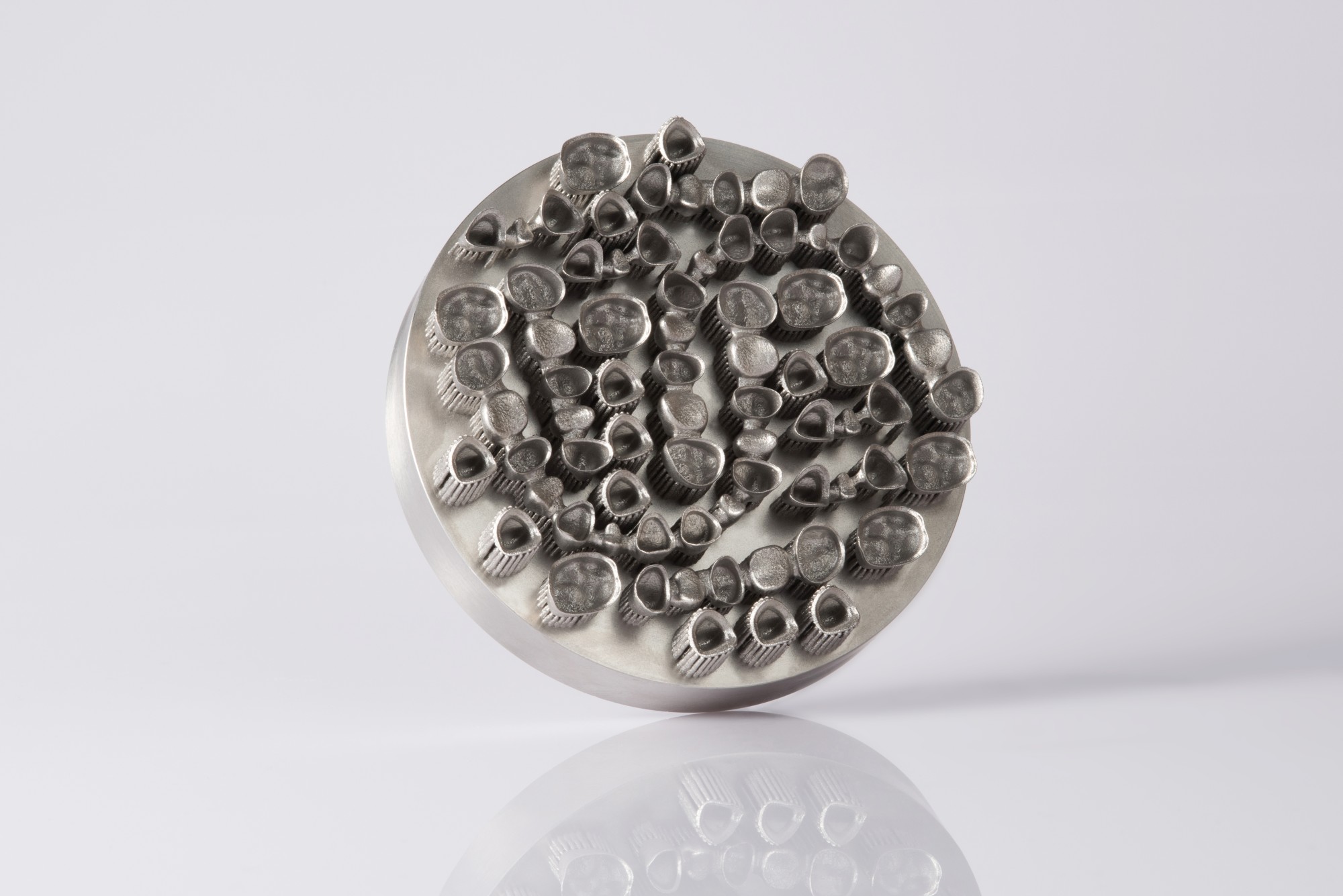Additive Manufacturing in Dental Industry-Dental Products Based on Industrial 3D Printing Technology
additive manufacturing is a 3D printing process that builds parts layer by layer. EOS offers fully integrated dental solutions for final dental product manufacturing with repeatable and consistent high quality. Whether it is used to produce crowns, bridges or removable partial dentures, EOS additive manufacturing solutions always bring unimaginable benefits. As a result, laboratories and service providers can conduct research and production more efficiently.
EOS's integrated quality management system can effectively achieve repeatable industrial quality standards in a value-for-money manner, providing a strong guarantee for the quality of EOS products, processes and services.
• Fully certified processes and products, e.g.EOS cobalt-chromium alloy SP2certified as Class II medical material for dental applications (Directive 93/42/EEC)
EOS R & D Center: R & D and manufacturing of materials and processes for dental applications (ISO 13485:2003)
• Consulting services during process validation (EOS service product)
EOS equipment is capable of producing medical devices. However, EOS is not committed to full device compliance.
Additive manufacturing (AM) technology for dental restorations and dental models
additive manufacturing is a 3D printing process that builds parts layer by layer, which is very different from traditional manufacturing techniques. The process uses 3D data based on the condition of the patient's oral cavity, this data being generated using an intraoral scanner or by scanning an oral impression or model. The data set is processed directly without loss of precision, similar to the traditional impression method-a dental restoration or tooth model is made first, and then "cut" into thin layers. The EOS system contains a metal or plastic powder bed, which generates the required geometry layer by layer. The powder material is then fused and shaped by a focused laser beam based on the digital data provided. When the processing of one layer is completed, the powder bed will drop by several 1% mm and the processing will start again. The final product has a consistent high quality. It not only meets the user's needs for precision and form, but also meets the budget/financial requirements.
Open Process
EOS process chain offers great flexibility thanks to its open system interface. The user can select the desired module and exchange data with it. The EOS system uses STL data (STL = Surface Tessellation Language (Surface Tessellation Language), a standard file format for 3D data), which allows dental technicians to use various computer-aided design programs (e. g. 3Shape, Dental Wings, Exocad, etc.). Thanks to the independent system structure, the digital CAD/CAM processes in design and data processing can be adapted to the requirements of the clinic or laboratory in terms of economy, specific indications and dental technology, thus realizing and optimizing the production process.
crown and bridge
Since 2005, additive manufacturing has been available for the production of crowns and bridges. With more than 60 systems installed around the world, EOS is the preferred solution in the market. Currently, these devices produce about 6.8 million products per year. This is enough to prove that EOS in the field of dental technology hardware and process has matured. CE certified materials EOS cobalt chromium alloy SP2 (CE 0537) and EOSINT M 270 system are used for digital production of crowns and bridges. Both elements of the process chain come from EOS and meet high quality standards for medical products. The finished product complies with the relevant standards EN 1641 and EN ISO 22674.
Fast and economical production of superior quality dental restorations
EOS system works very accurately and can produce about 450 products in 24 hours at a low cost. Digitally produced dental restorations are of consistently excellent quality. Once the manufacturing process is complete, the dental restoration is simply separated from the base plate. Compared with other manufacturing technologies, the composite strength of ceramic veneering is more excellent. The EOS system requires almost no human operation. This means that two production cycles can be run per day, depending on the number of products per day and capacity utilization, and up to 80,000 products can be produced per year. Manual involvement is only required in the system loading and unloading process. Additive manufacturing of dental restorations is an industrial-grade production process that benefits from the extremely high production efficiency of the system, while significantly reducing production costs, while ensuring that the final product always maintains excellent quality.
removable partial denture
Compared with the traditional production method, the digital production method can save a lot of time: just a few clicks of the mouse, the design of the removable partial denture can be completed in about 15 minutes. Thanks to the design flexibility of additive manufacturing, modeling software breaks free from the constraints of manufacturing technology. Can produce high strength, high rigidity, at the same time very fine geometry, and can effectively eliminate the casting error.
precise and economical technology
are of consistently excellent quality. At the same time, the method is also very economical, and can produce about 48 products in 24 hours.
certified process chain with specially developed materials
Removable partial dentures are made of EOSINT M 270, which is widely accepted in the market. Compared with the structure of the casting, the fine powder particles of the material can be made into a fine grain structure, and the material characteristics are matched to the application. Removable partial dentures fabricated with the aid of a computer have a higher strength than conventional model castings and a lower risk of clamp fracture. Excellent detail handling capability enables reproduction of the groove structure. The materials and systems are from EOS and meet the high quality standards required for medical products. The finished product complies with the relevant standards EN 1641 and EN ISO 22674.



